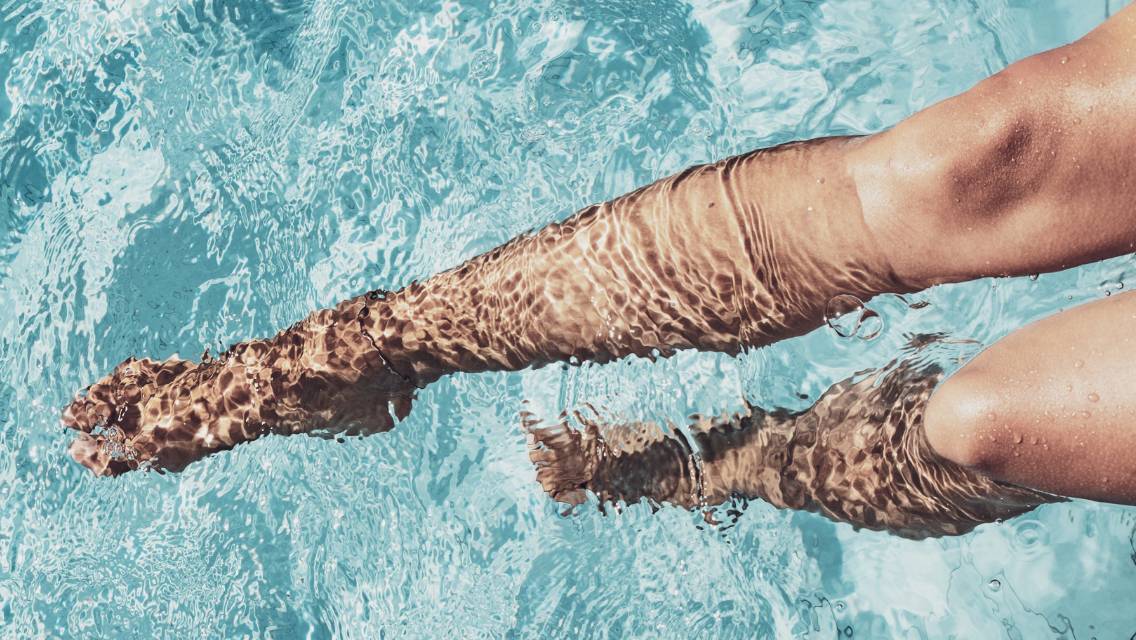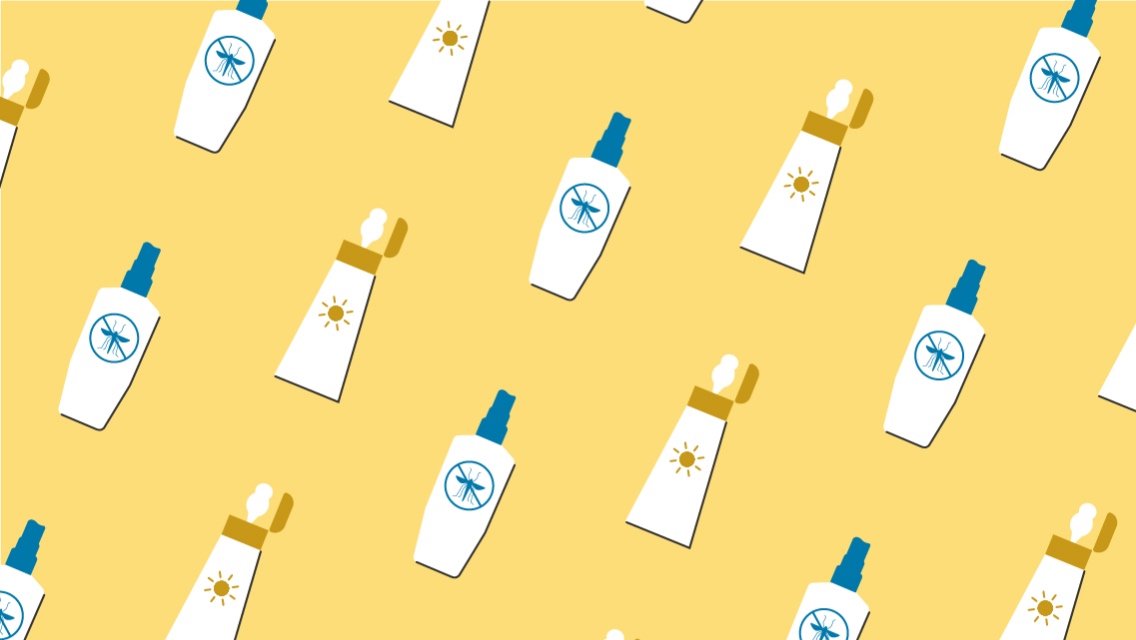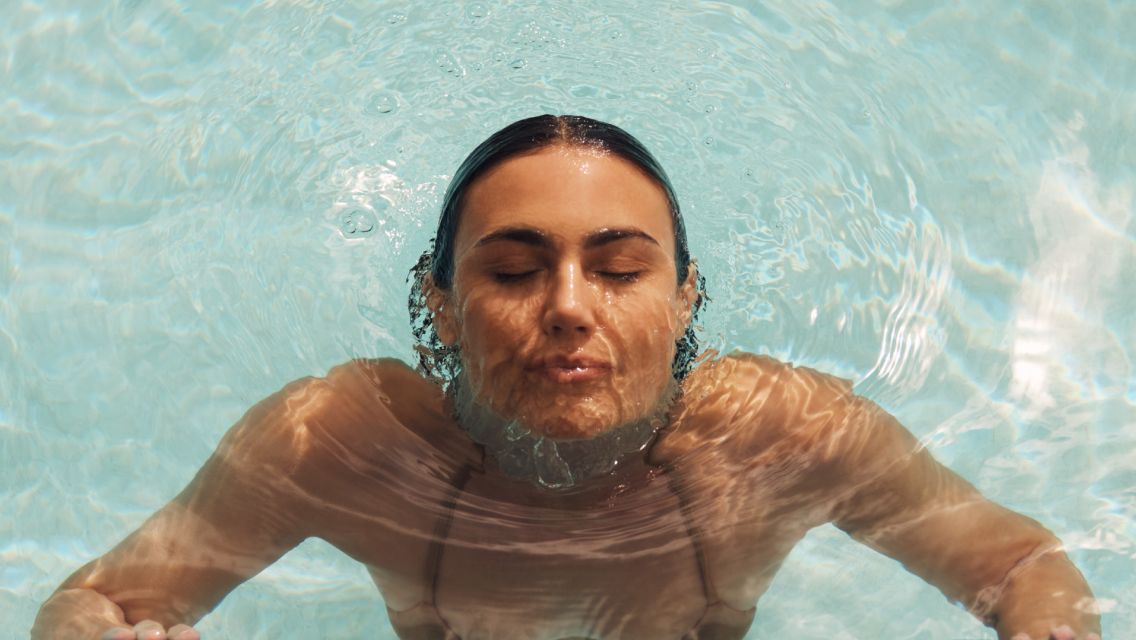Spending time in the sunshine is arguably one of the best parts of the summer season. But too much sun exposure can have consequences — most notably sunburned skin. This happens when ultraviolet (UV) radiation from the sun causes damage to DNA cells in the skin.
When your skin is exposed to direct sunlight for even a matter of minutes, the damage it can cause to the skin cells may trigger an inflammatory response. This means your skin can turn reddish in color, and you could feel pain, swelling, or hot in temperature. Too much sun can also cause a feeling of fatigue. The damaged skin cells die and need to shed, which causes peeling and flaking of the skin while it recovers.
To help you protect your skin this summer — and know what to do if you get sunburned — we asked Joee Nelson, master esthetician at LifeSpa in Eden Prairie, Minn., to answer some common questions around staying safe in the sun.
Life Time Editorial | I got sunburned. What steps can I take to help my skin heal or recover?
Joee Nelson | If your skin is inflamed and red or you’re feeling pain, I recommend applying a cold compress to the sensitive area or taking a cool shower or bath. You can also use a soothing, cooling product like aloe vera gel or lotion.
Aloe vera has anti-inflammatory properties that help calm your skin. Apply a layer to your sunburn and repeat as needed. Just make sure whatever product you use does not contain alcohol, as it can further irritate your skin. My favorite product for moisturizing my skin post-sun is the IS Clinical Sheald Moisturizer (available at LifeSpa).
Additionally, staying hydrated is especially important when your skin is inflamed. Sunburn draws water toward the skin’s surface, which can take it away from the rest of your body, so be mindful about drinking enough water.
(Learn more: “Everything You Need to Know About Hydration”)
LTE | What do you recommend for itching and peeling skin after sunburn?
JN | For itching, an over-the-counter allergy medication could help. You can also try a topical hydrocortisone ointment, similar to what you’d use to treat a bug bite.
If your skin is peeling, do your best not to pull off the skin or exfoliate the peeling area. Before the dead skin falls off, it serves the purpose of protecting the still-living skin underneath. If you expose this tender skin too early, it can prolong your healing process. Continue to keep the peeling area hydrated with a moisturizer; one of my favorites to use is the IS Clinical Sheald Recovery Balm.
In more extreme cases, your skin can start to blister from sunburn. If this happens, I recommend keeping the area clean and applying a petroleum jelly product or an antibiotic ointment along with a bandage to protect it as it heals.
LTE | How can I protect my sunburn from further sun exposure?
JN | Whether you’re burned or not, always take steps to protect yourself from the sun. Start by applying SPF to your face and body 30 minutes before going outside for the day. Reapply every two to three hours.
If you’re spending time in direct sunlight, take frequent breaks in the shade, and I always recommend wearing a hat and sunglasses to protect your face and the delicate area around your eyes. You can also protect sensitive or sunburned areas with clothing — for example, long-sleeved swim shirts are a great option.
LTE | What level of SPF do you recommend for face? Is it a different recommendation for body?
JN | I always start my day using at least SPF 30 on both my face and body. This amount of SPF blocks 97 percent of the sun’s UVB rays. As you go up further than SPF 30, the sun protection you receive is relatively similar. For example, SPF 50 blocks 98 percent of UVB rays and SPF 100 blocks 99 percent. A higher SPF does not mean you can spend more time out in the sun.
(Read more: “Which Sunscreen Is Right For You?”)
LTE | Can other products besides sunscreen help me prevent sun damage?
JN | Along with using a sunscreen with an SPF of at least 30, I suggest adding a vitamin C serum to your daily skincare routine to protect your skin from long-term damage. Vitamin C is an antioxidant, which helps protect your skin against damage caused by pollutants and other environmental conditions, including the sun’s rays.
(For more on protecting your skin this season, check out these “8 Tips for Healthy Summer Skin.”)





